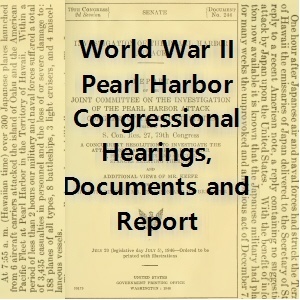
World War II: Pearl Harbor Investigation Reports & Hearings
$19.50
Description
The Pearl Harbor Congressional Investigation
Timeline of Events:
- December 7, 1941: The Japanese attack on Pearl Harbor occurs. This event is the catalyst for the investigations, though not directly addressed in this particular document.
- August 29, 1945: President Harry Truman releases Army and Navy investigation reports on the Pearl Harbor attack. These reports largely hold commanders in Washington, particularly Cordell Hull and General George Marshall, responsible for the lack of preparedness at Pearl Harbor.
- April 8, 1945: Germany surrenders, marking a turning point in World War II and creating space for investigations to be considered.
- September 2, 1945: Japan formally surrenders, ending World War II. This further opens the way for the Pearl Harbor investigations to begin.
- September 6, 1945: Senate Majority Leader Alben Barkley presents a Senate resolution calling for a joint Congressional investigation into the “contradictions and inconsistencies” within the previous reports on the Pearl Harbor attack. The Senate unanimously approves Concurrent Resolution 27 the same day.
- September 11, 1945: The House of Representatives concurs with the Senate resolution, formally creating the Joint Committee on the Investigation of the Pearl Harbor Attack (also known as the Pearl Harbor Committee).
- November 1945 – May 1946: The Pearl Harbor Committee conducts public hearings in the Senate Caucus Room. 44 people testify, including top military commanders, former diplomats, and government officials.
Cast of Characters:
- Harry Truman: President of the United States in 1945. He releases the initial Army and Navy investigation reports on Pearl Harbor.
- Cordell Hull: Former Secretary of State. The initial Army and Navy reports found him partially responsible for the lack of preparedness at Pearl Harbor.
- General George Marshall: Army Chief of Staff during the lead-up to the Pearl Harbor attack. The initial Army and Navy reports found him partially responsible for the lack of preparedness at Pearl Harbor.
- Alben Barkley: Senate Majority Leader in 1945. He was the first to call for Congressional action and present a Senate resolution to form a joint investigatory committee.
- Admiral Husband Kimmel: A top level military commander who testified before the Pearl Harbor Committee.
- General Walter Short: A top level military commander who testified before the Pearl Harbor Committee.
- Joseph Grew: Former ambassador to Japan who testified before the Pearl Harbor Committee.
Notes:
- The primary focus of this document is the Congressional investigation of Pearl Harbor, not the attack itself.
- The timeline is specifically about the investigation and its initiation, post World War II.
- The “political” divide alluded to suggests the investigation was not purely about finding facts, but also a subject of political maneuvering.
- The source is primarily a description of the compilation of the documents from the Congressional investigation itself.
World War II: Pearl Harbor Congressional Investigation Reports, Hearings & Documents
The Congressional Joint Committee on the Investigation of the Pearl Harbor Attack produced a massive record, totaling 22,816 pages of transcripts, evidence, and its final conclusions.
President Truman made public the army and navy’s findings on August 29, 1945, which largely blamed Washington leaders, specifically ex-Secretary of State Cordell Hull and Army Chief of Staff General George Marshall, for the inadequate defenses at Pearl Harbor. While the war was ongoing, Congress had delayed its own inquiry.
With Germany’s capitulation on April 8th and Japan’s formal surrender on September 2, 1945, Congress was finally able to proceed. Senate Majority Leader Alben Barkley initiated the move, proposing a Senate resolution on September 6, 1945. He advocated for a joint committee to investigate the “conflicts and discrepancies” in the earlier reports. The Senate quickly passed Barkley’s Concurrent Resolution 27 that same day, and the House followed suit on September 11th, thus establishing the Joint Committee on the Investigation of the Pearl Harbor Attack, often referred to as the Pearl Harbor Committee.
The Committee aimed to conduct a thorough examination of the events and circumstances that preceded and followed the attack. (S. Con. Res. 27, 79th Cong.) Their investigation focused on identifying any U.S. errors or failures that might have contributed to the disaster, and to propose improvements to prevent future occurrences. The committee held public hearings from November 1945 to May 1946 in the Senate Caucus Room, hearing from 44 witnesses, including high-ranking military officials like Admiral Husband Kimmel and General Walter Short, as well as former ambassador to Japan Joseph Grew and former Secretary of State Cordell Hull. The press frequently portrayed the committee as having partisan disagreements, with news stories using titles like “Senators Clash over Pearl Harbor Documents” and “Republicans Accuse Democrats of Obstructing Pearl Harbor Investigation.” This part includes the committee’s concluding document, along with the records of the hearings and supporting materials, spanning volumes 1 to 39.
Related products
-
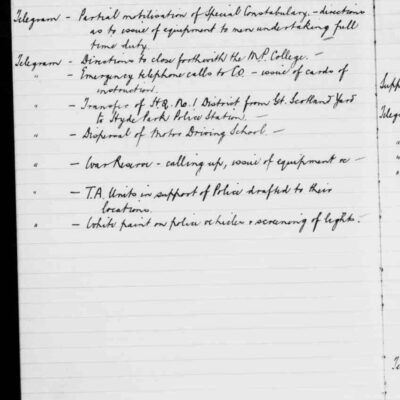
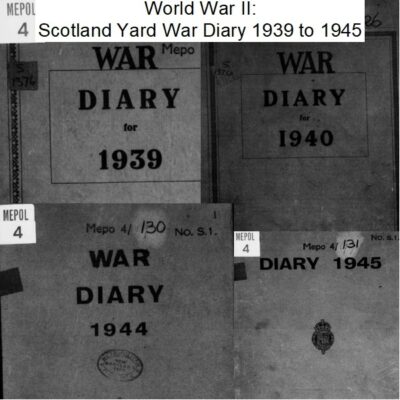
World War II: Scotland Yard War Diary from 1939 to 1945
$3.94 Add to Cart -
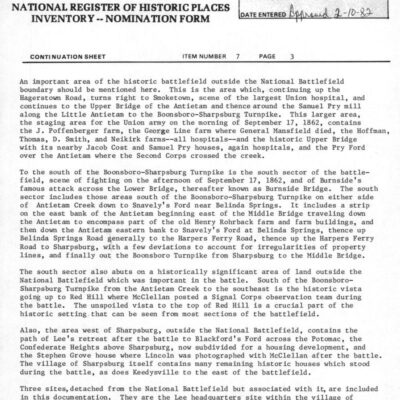
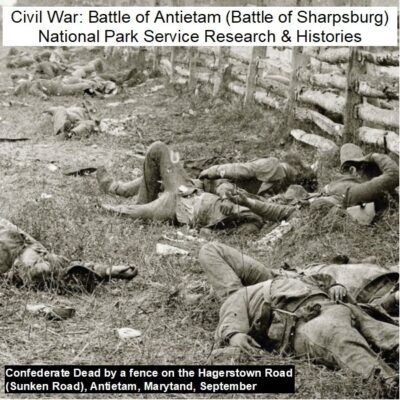
Civil War: Battle of Antietam (Sharpsburg) – National Park Service Archives
$9.99 Add to Cart -
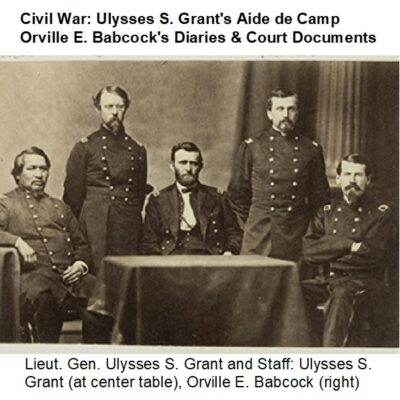
Civil War Ulysses S. Grant’s Aide de Camp Orville E. Babcock’s Diaries & Court Documents
$3.94 Add to Cart -
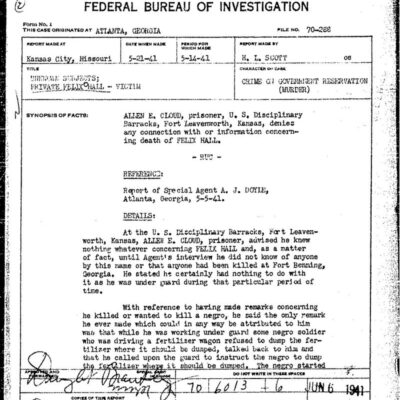
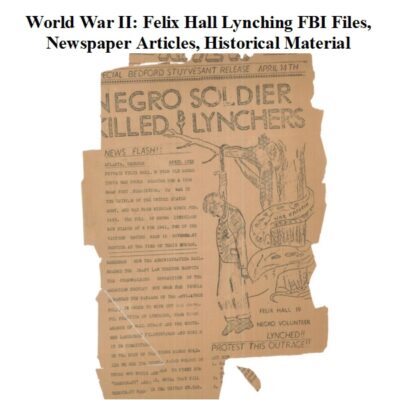
World War II: Felix Hall Lynching – FBI Files, Articles, Historical Records
$9.99 Add to Cart